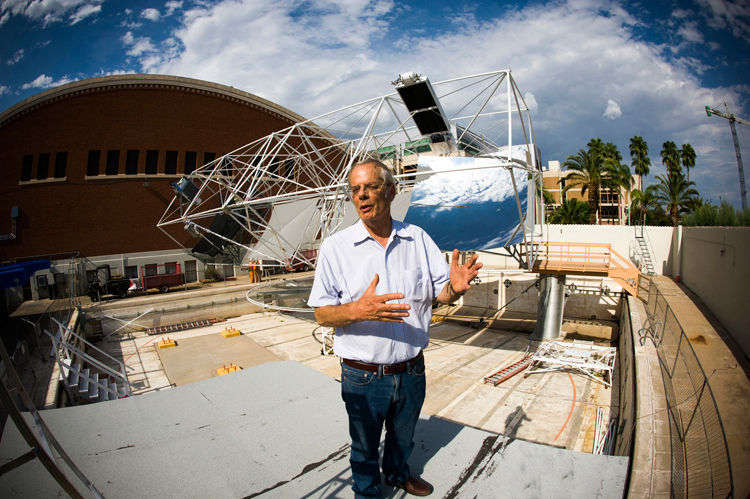I’ve mentioned before how much I love the Internet magazine Aeon, one of the smartest things anywhere. All praise to the site’s co-founders Paul and Bridget Hains, their Deputy Editors Ed Lake and Ross Andersen (who’s also written some of the periodical’s best pieces) and the entire staff.
One excellent new essay is Greg Klerkx’s “Outer Limits,” which points out that “space” has never truly been defined. The opening:
“Any time we embark upon a journey, be it a morning commute or a leisurely day trip, we engage in transition. We are a travelling species, which means transitions are commonplace for us, mundane even. But there are some trips that can still fire the human imagination, and none more so than the journey, experienced only by a lucky few, from the surface of Earth to the beginning of space.
On his 108-minute flight in 1961, the Soviet cosmonaut Yuri Gagarin, the first human being in space, reached a peak altitude of 327 kilometres (203 miles), after blasting off the planet atop a mighty Vostok rocket. After launch shook his tiny capsule violently, Gagarin experienced the feeling of weightlessness, and saw the curvature of the Earth first-hand. By all accounts, he crossed the mysterious border between the Earth and space. Or did he? It has been more than half a century since Gagarin’s historic journey, but there is still no universally accepted definition of where space begins.
There is general agreement that ‘space’ starts where the Earth’s physical influence ends or is significantly displaced, but no consensus as to where that line actually lies. Does space begin where the Earth’s atmosphere ends? That would seem sensible, except the atmosphere extends some 800 kilometres above the planet. That would exclude Gagarin’s flight, and the International Space Station (ISS) whose orbit around the Earth is only 400 kilometres high. Earth’s gravity might well seem like another natural candidate for ‘edge of space’ status, but you have to travel 21 million kilometres before our planet’s gravity loses out to other forces, and that’s roughly halfway to Venus.
The International Astronautical Federation marks the beginning of space, for aviation purposes, at the 100-kilometre mark, where the Earth’s atmosphere is so negligible that conventional aircraft cannot travel fast enough to generate aerodynamic lift. There are other, more arbitrary numbers. In the 1960s, 8 US pilots earned their astronaut wings by flying the arrow-shaped X-15 rocket plane above 80 kilometres. In the US, this standard still applies, meaning that any American who flies on one of Virgin Galactic’s private spacecraft will officially become an astronaut.
Recent scientific discoveries have further muddled our terrestrial-celestial border confusion. In 2009, an instrument called the Suprathermal Ion Imager (SII) pinpointed 118 kilometres as the point at which charged particles from space begin to overwhelm the relatively mild particle flow of the Earth’s upper atmosphere. That was the point, researchers argued, where space really begins. Headlines hailing the discovery of the ‘edge of space’ briefly splashed across the media, but the attendant stories were hesitant, bracketing any notions of finality with alternative edge-of-space definitions.”


